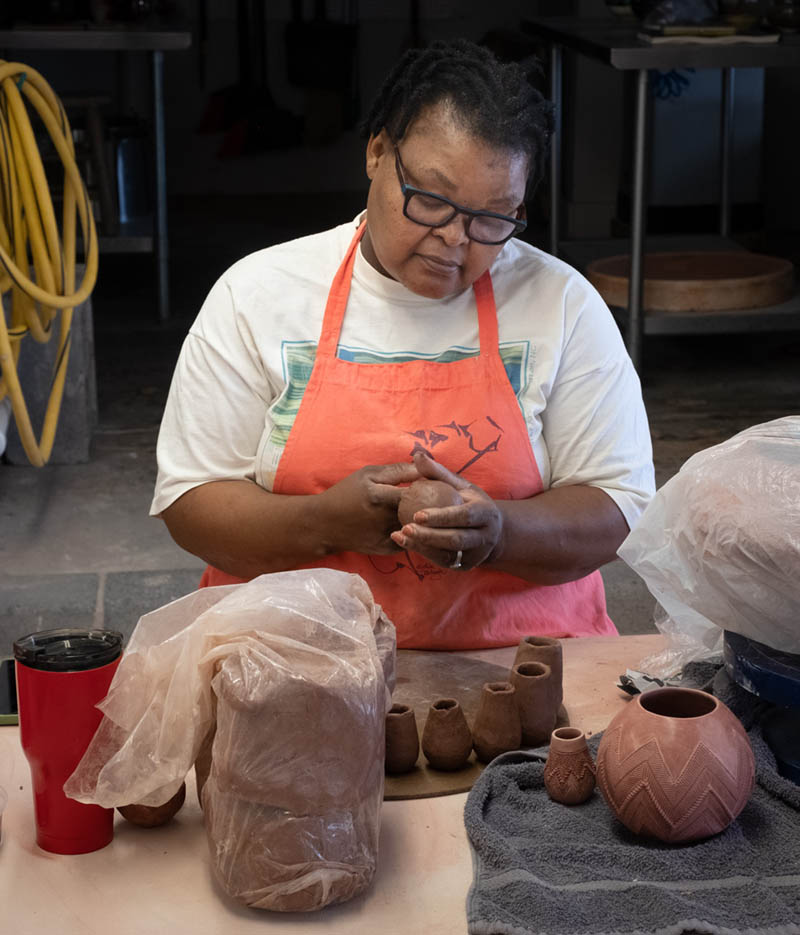 We loved having Jabulile Nala as a visiting artist in the clay studio last week. Jabu is from South Africa and works in the Zulu pottery tradition. She spent some time visiting our neighbors at Bandana Pottery and also with Cynthia Bringle. In the Penland studio she made pots and guided students as they worked alongside her. For the next two months, she’ll be in residence at Star Works in Star, North Carolina. Learn more about Jabu and her work at jabulilenala.com.
We loved having Jabulile Nala as a visiting artist in the clay studio last week. Jabu is from South Africa and works in the Zulu pottery tradition. She spent some time visiting our neighbors at Bandana Pottery and also with Cynthia Bringle. In the Penland studio she made pots and guided students as they worked alongside her. For the next two months, she’ll be in residence at Star Works in Star, North Carolina. Learn more about Jabu and her work at jabulilenala.com.
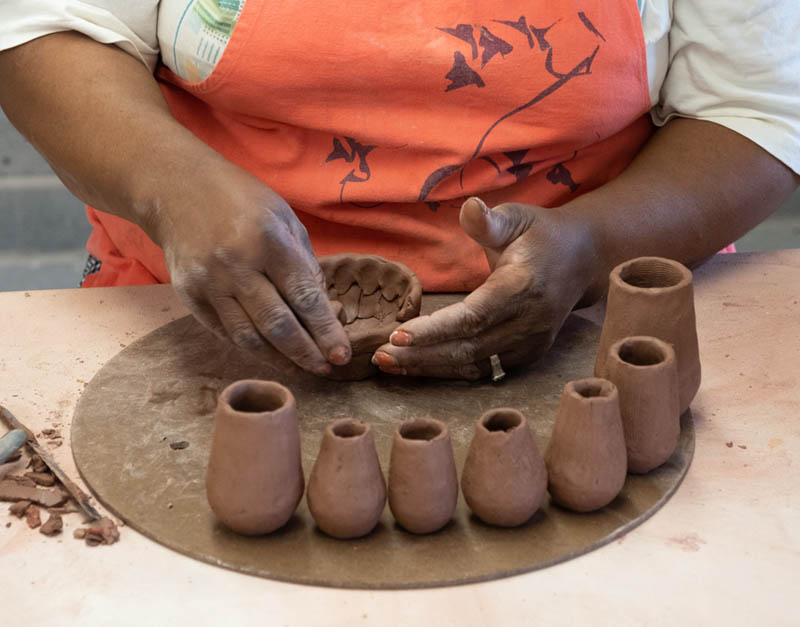
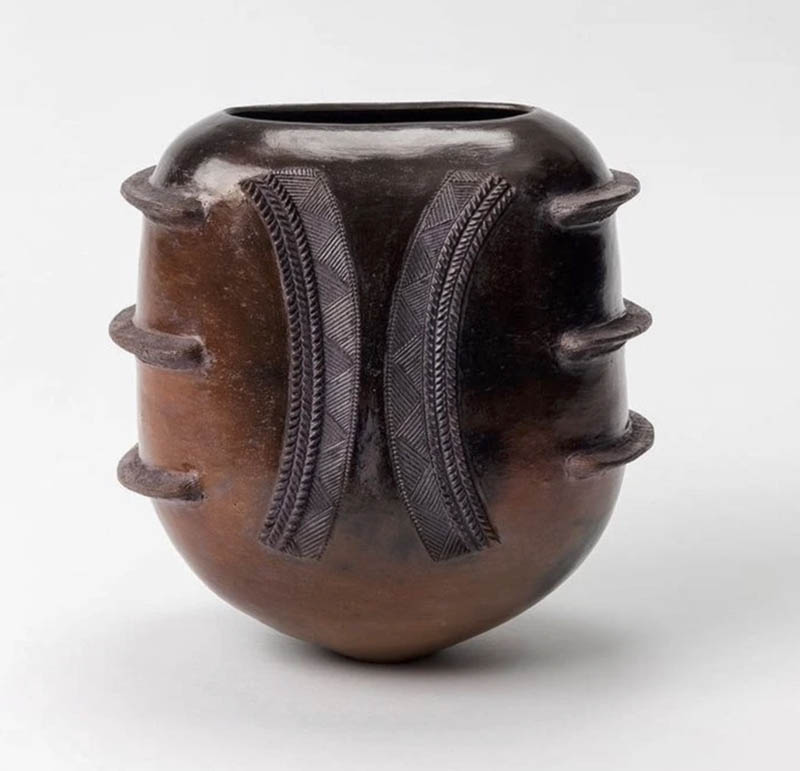
Here is a picture of one of her beautiful finished pieces, which we borrowed from her website.
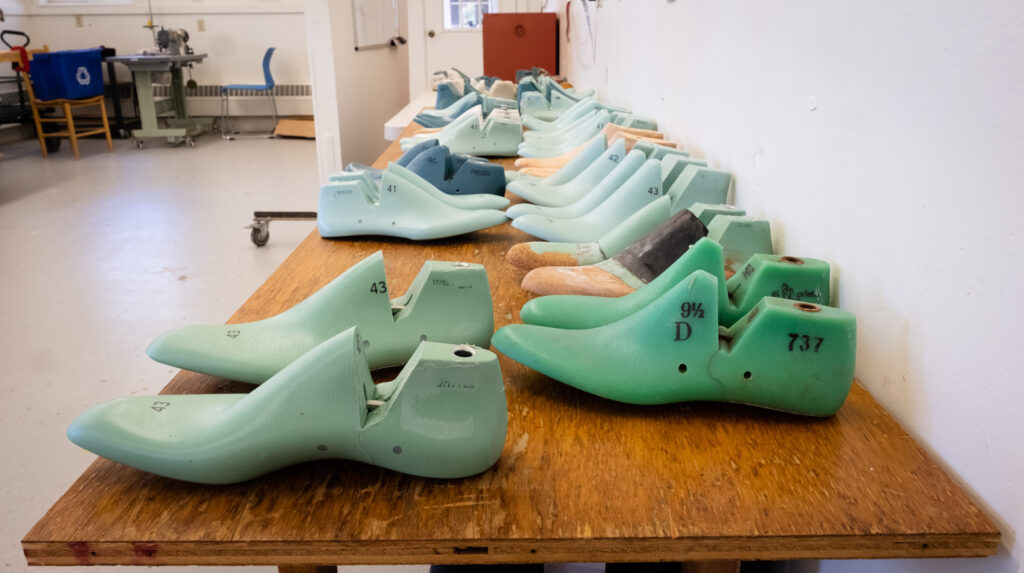
Shoe lasts are molds used by people who make or repair shoes. Amara Hark Weber is here teaching a six-week shoemaking workshop this fall, and these are just some of the lasts she brought with her. In her workshop, of course, students are making shoes that will last–for a long time.
(Apologies to all shoe people for the obvious puns.)
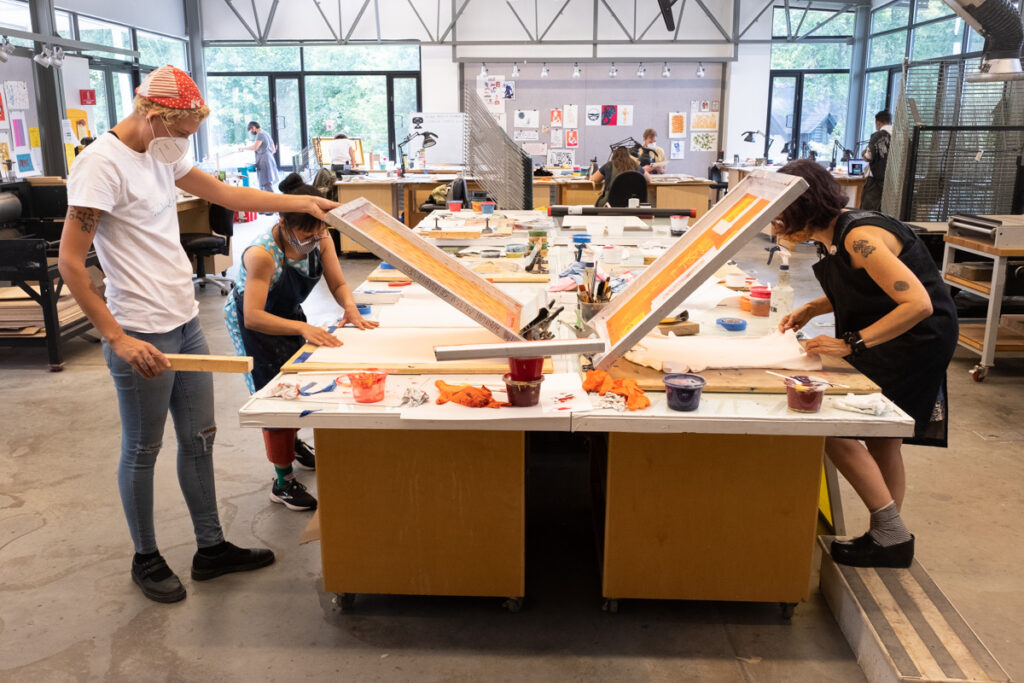
On the busy last day of Session Six, core fellow SaraBeth Post (left), instructor Asuka Ohsawa (assisting SaraBeth), student Victoria Cable (right), and their fellow workshop participants were all working like mad before their afternoon studio cleanup. We approve of running out the clock!
 We loved having Jabulile Nala as a visiting artist in the clay studio last week. Jabu is from South Africa and works in the Zulu pottery tradition. She spent some time visiting our neighbors at Bandana Pottery and also with Cynthia Bringle. In the Penland studio she made pots and guided students as they worked alongside her. For the next two months, she’ll be in residence at Star Works in Star, North Carolina. Learn more about Jabu and her work at jabulilenala.com.
We loved having Jabulile Nala as a visiting artist in the clay studio last week. Jabu is from South Africa and works in the Zulu pottery tradition. She spent some time visiting our neighbors at Bandana Pottery and also with Cynthia Bringle. In the Penland studio she made pots and guided students as they worked alongside her. For the next two months, she’ll be in residence at Star Works in Star, North Carolina. Learn more about Jabu and her work at jabulilenala.com.




